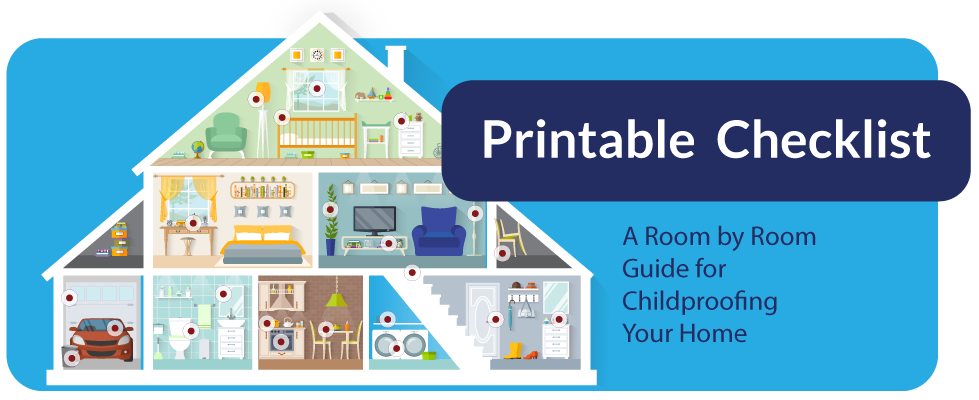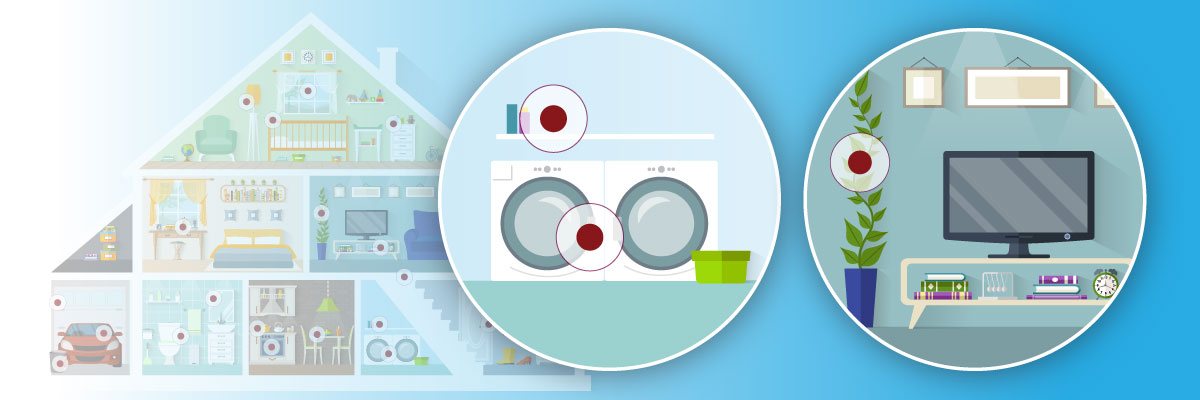Article at-a-glance
- Crawling around a room on your hands and knees is the best way to find potential hazards.
- Teaching caution about what children shouldn’t touch is as important as ensuring there are not any safety issues in a room.
- Safeguards should always be in place for anything with water and electrical when childproofing your home.
We spend many hours in our living areas, so these spaces must be childproofed. The best way to look for potential dangers is to cruise around your living areas baby-style on all fours regularly. Yes, crawl! This way you can view the world like your child does and spot things like dropped coins, remote batteries, and other hazards.
Safeguard, But Also Teach

In the living spaces, does your toddler know his limits about what is ok to touch and what isn’t? Eliminating safety issues is one part of childproofing, but teaching caution is the other. If you put away all the knickknacks in your living space, then your child thinks everything in their reach is touchable. Work toward a balance when safeguarding your home. Consider leaving a few expendable trinkets around to use them as a teaching device. Every environment introduces new objects, so teaching your child to check in with an adult before touching something new is a lesson that pays dividends.
Safety Checklist for Living Spaces
- Install full-size child safety covers on all electrical outlets. These are safer than the small plug protectors.
- Make sure heavy furniture, like bookcases and cabinets, are bolted to the wall. Also, secure televisions and stereo systems so they cannot topple over onto a child.
- Cushion sharp edges of furniture with store-bought edge protectors or DIY some foam to the corners with tape.
- Make sure area rugs are slip-resistant. Do not run electrical cords underneath carpeting.
- Window curtains and blinds can be dangerous to children. Keep the pull-up cords out of reach.
- Block the entrance to stairs with the correct type of child safety gate.
- Place security latches on all exterior doors.
- Do not store matches or lighters in a child’s reach. Consider using only flameless candles.
- Keep all remote controls away from children. Small batteries are dangerous if swallowed, and most remotes have battery covers that are easily removed.
- Be careful when using a heating device during winter – either an electric space heater or wood-burning fireplace. Both can cause burns and fires.
- Identify and dispose of any house plants that are poisonous.
Childproofing Your Laundry Room
The laundry room can be a hazardous place for toddlers. Keep these safety tips in mind:
- Washer and dryer doors should always be kept closed. You can purchase safety latches for these machines, especially the front loaders.
- Laundry detergent pods are responsible for many deaths and poisonings. They are tempting to toddlers with their bright colors, resembling candy. Keep pods out of reach and preferably out of sight. This safety warning also applies to other chemicals stored in this room.
- Many laundry rooms contain the water heater. This can be a dangerous appliance due to a water outlet faucet. Make sure children cannot access this drain outlet. Keep your water temperature no higher than 120-degrees F.
- A toddler can drown in a bucket of water. If you need to soak a garment, put it behind a locked door or out of reach.
- Make sure to clean out your dryer vents of lint often to prevent fires.
- Get into the habit of emptying clothing pockets early, before piling clothes on the laundry room floor. Adult pockets may contain choking hazards, sharp objects, and even poisons like the odd vitamin or pain reliever.
Keep the National Poison Control phone number handy: 1-800-222-1222.
For more tips on childproofing your home, visit the other posts in our series:
Childproofing the Kitchen and Bathroom
Childproofing Your Bedrooms
Childproofing the Garage, Storage Areas, and Yard
Save
Save
Share this article:

